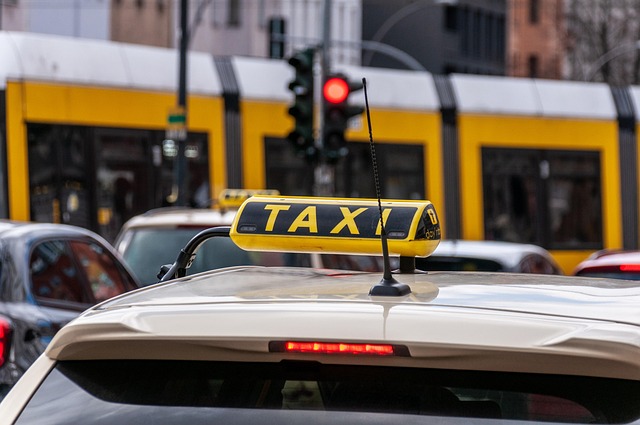Looking to register your car in California? Our step-by-step guide makes the process simple. First, understand key requirements for car registration in California, including necessary documents for VIN (Vehicle Identification Number) verification. Learn how to perform a VIN check online or at a DMV office and complete the registration form. Once approved, pay fees and receive your official license plate. Ensure everything is in order with seamless vin verification for a smooth registration experience.
- Understand California Car Registration Requirements
- Gather Necessary Documents for VIN Verification
- Perform Vehicle Identification Number (VIN) Check
- Complete Online Registration or Visit DMV Office
- Pay Registration Fees and Receive Your Plate
Understand California Car Registration Requirements

Before registering your car in California, it’s crucial to understand the state’s specific requirements. One key aspect is ensuring the Vehicle Identification Number (VIN) is verified accurately. This process involves a thorough inspection to confirm the vehicle’s make, model, year, and other critical details. A mobile vin verifier or a professional vin inspection can be utilized to ensure this step is completed correctly.
California requires all vehicles to meet certain safety and environmental standards set by the state. Additionally, you’ll need to provide proof of insurance, pay registration fees, and present necessary documents like the title and a valid emission test certificate. A mobile vin verification service can streamline this process by quickly confirming your vehicle’s authenticity and history, making it easier for you to complete the registration.
Gather Necessary Documents for VIN Verification

To initiate the car registration process in California, you’ll first need to gather all the essential documents for VIN (Vehicle Identification Number) verification. This step is crucial as it ensures the vehicle’s authenticity and history are accurately checked. The key document required here is the Certificate of Title from the previous owner, along with a valid driver’s license or state ID card. Additionally, proof of insurance and a completed California Vehicle Registration Application form are mandatory.
For a seamless vin verification process, consider using a mobile vin verifier service that can quickly inspect your vehicle’s history. This alternative to traditional vin inspection methods offers convenience, especially if you’re short on time or have a busy schedule. Ensure these documents are readily available and accurate to avoid delays in registering your car in California.
Perform Vehicle Identification Number (VIN) Check

Before registering your car in California, it’s crucial to perform a Vehicle Identification Number (VIN) check. This step ensures that the vehicle matches its listed specifications and helps prevent fraud. A VIN inspection verifies the vehicle’s history, including any accidents, recalls, or outstanding loans. You can conduct this process by visiting a local DMV office or using a mobile vin inspection service for convenience.
A mobile vin verifier can be particularly handy during this stage. These services allow you to check a car’s VIN remotely, providing instant access to detailed vehicle history reports. This technology simplifies the registration process by ensuring that all paperwork is accurate and up-to-date, making it easier to complete your California car registration smoothly and efficiently.
Complete Online Registration or Visit DMV Office

You have two options for registering your car in California: complete the process online or visit a DMV office in person. While both methods involve gathering essential documents and providing accurate information, going digital offers several advantages. Online registration allows you to submit your application anytime, from anywhere, as long as you have access to your vehicle’s VIN (Vehicle Identification Number). This initial step, known as VIN verification, is crucial for confirming the vehicle’s details and ensuring it meets California’s requirements.
Compared to a traditional in-person visit, online registration can save time and often requires fewer trips. Additionally, some services offer mobile VIN verification options, allowing you to have your car inspected remotely by a professional. This flexibility is especially beneficial for those with busy schedules or limited mobility. However, if you prefer face-to-face interaction or need immediate assistance, visiting a DMV office remains an efficient and straightforward approach.
Pay Registration Fees and Receive Your Plate

After successfully completing your vehicle’s registration application and providing all necessary documents, it’s time to pay the registration fees. California charges a base fee for registration, which may vary based on the type of vehicle you own. You can typically pay online or in person at a DMV office. Once your payment is processed, the DMV will issue your vehicle’s license plate. This process often involves a vin inspection to ensure the vehicle’s authenticity, and a mobile vin verifier or service can be particularly useful if you’re registering a car remotely.
Ensure that you have accurate and up-to-date information regarding your vehicle’s details before proceeding. The DMV will assign a unique California license plate based on available numbers, and you’ll receive it along with your registration documents. Remember to keep these documents secure and handy for future reference and to avoid any penalties related to an unregistered vehicle.
Registering a car in California involves understanding state requirements, gathering essential documents, and either completing an online registration or visiting a DMV office. After passing the vehicle identification number (VIN) check, you’ll pay the necessary fees and receive your new license plate. Ensure a smooth process by staying informed about each step, including vin verification, to avoid delays and keep your vehicle legally registered.
